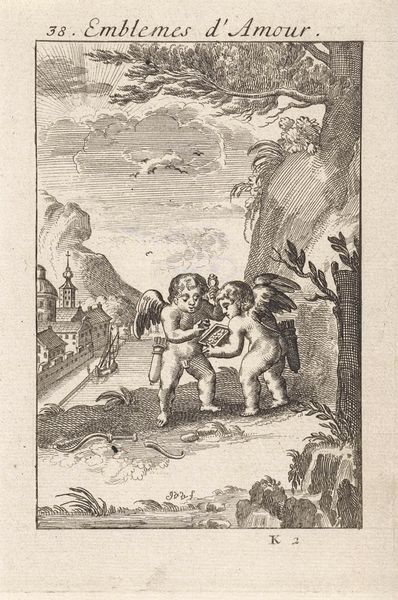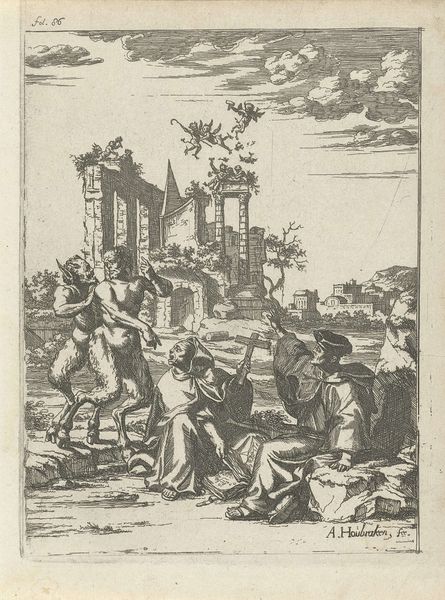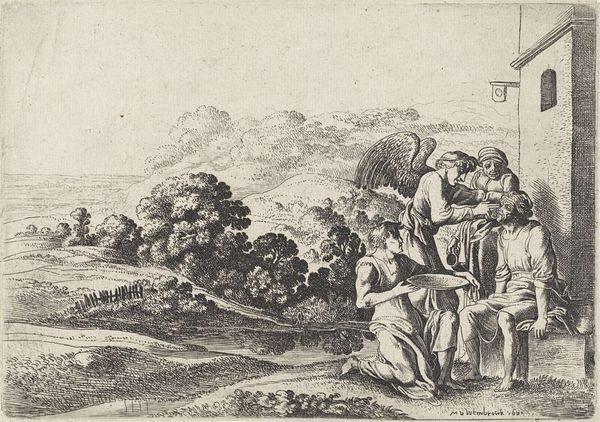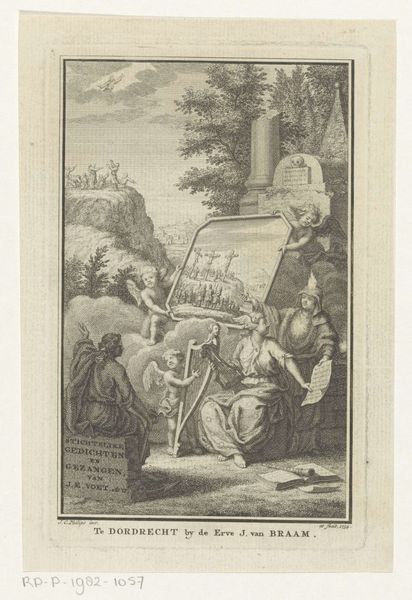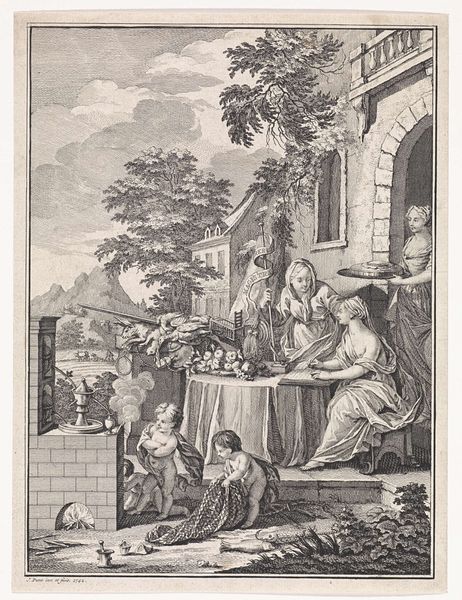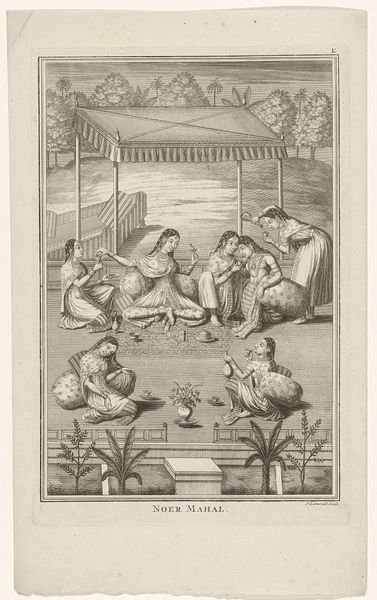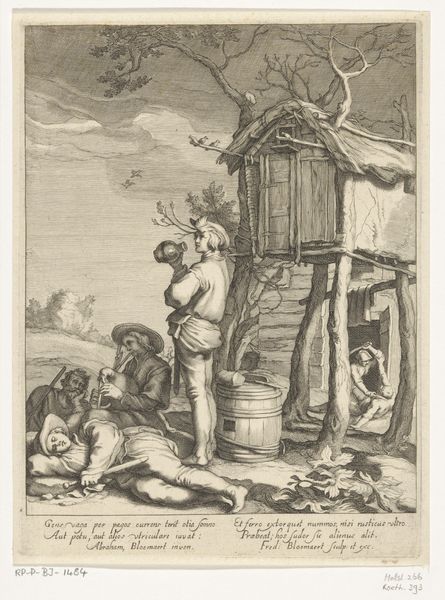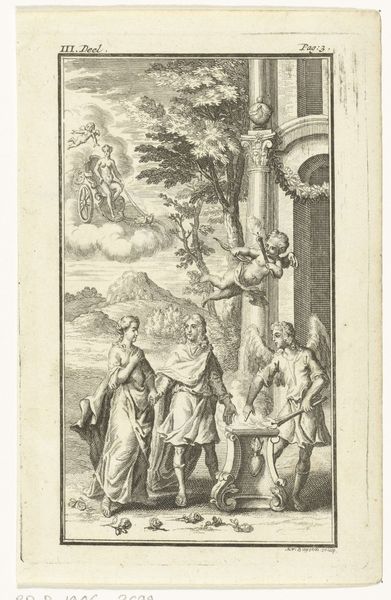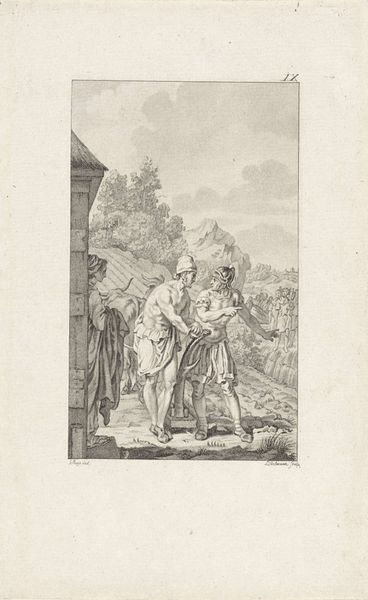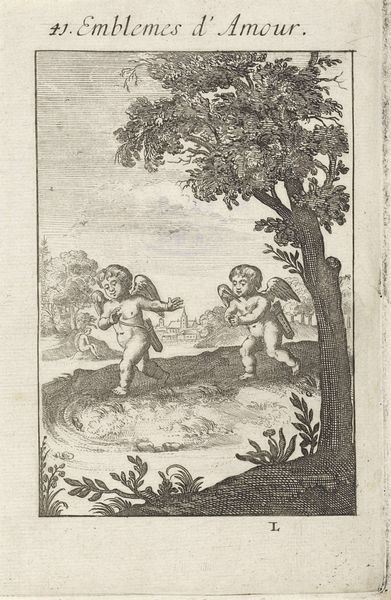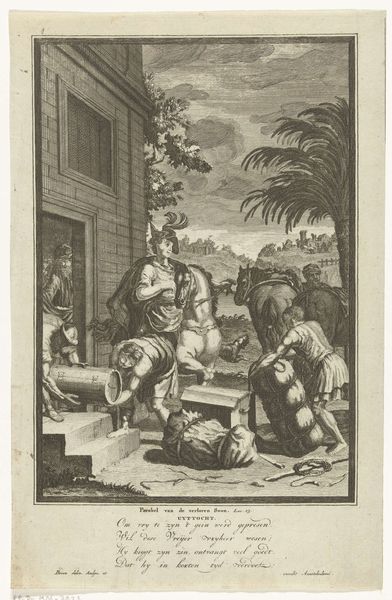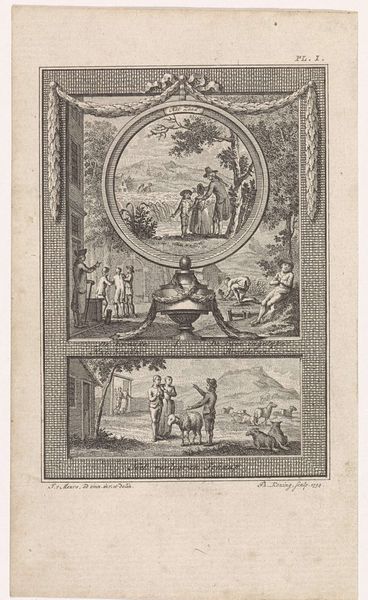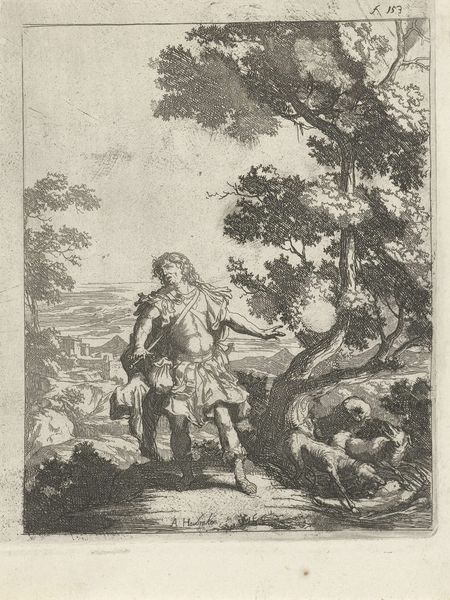
engraving
#
narrative-art
#
baroque
#
figuration
#
line
#
genre-painting
#
history-painting
#
engraving
Dimensions: height 145 mm, width 95 mm
Copyright: Rijks Museum: Open Domain
Editor: Here we have Jan van Vianen's "Vrouw en twee mannen bij een molen" from 1686, an engraving currently held at the Rijksmuseum. I'm struck by the sort of everyday, almost mundane scene, despite the slightly heightened style. How do you interpret this work, especially given its time? Curator: This piece, ostensibly a genre scene, operates on multiple levels. Let’s consider the prominent windmill. While seemingly a common sight in 17th-century Netherlands, the windmill held strong symbolic weight, representing industry and prosperity, yes, but also national identity and resistance against Spanish oppression. How might these factors shape your reading of this image? Editor: I hadn't thought about the national identity aspect so directly. It felt like just background! So, the people… Curator: Exactly! Look closely. You see three figures: woman and two men working collectively, processing materials around a wooden tub. How might gender roles and power dynamics be represented here? Who benefits from whose labour, and whose story isn't being told? Is this moment of hard, shared labor, truly shared, in its benefits and representation? Editor: That's a lot to consider. I suppose I was seeing just a simple scene, not all the underlying tensions and potential commentary. It almost feels… loaded, now. Curator: Indeed. Engaging with the social and historical context can illuminate how seemingly simple images participated in larger conversations about labour, identity, and even resistance. Consider this piece not just as a visual record, but as an argument about societal power structures during the Baroque era. Editor: It’s amazing how much more there is when you start looking at it that way. Thanks, that’s really opened my eyes! Curator: My pleasure. Hopefully, you can now help others appreciate art in deeper, more meaningful ways.
Comments
No comments
Be the first to comment and join the conversation on the ultimate creative platform.
